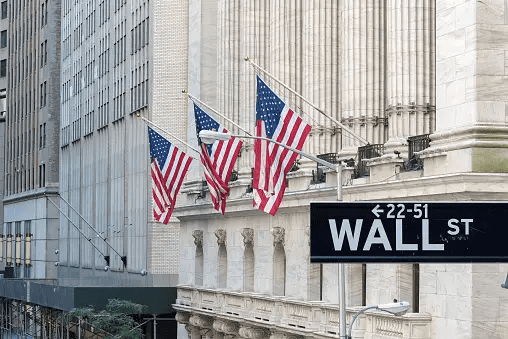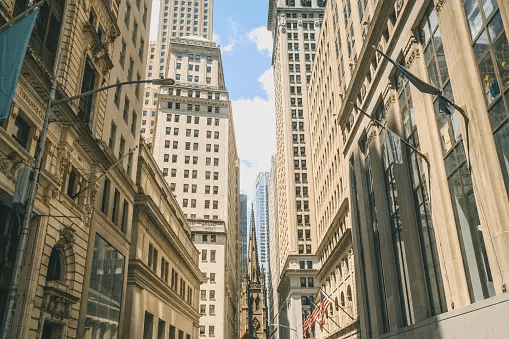Wall Street rebounded Wednesday, tracking gains in both the FTSE 100 and European stocks, after US inflation dropped to a three-year low. The annual rate of inflation in the US dropped to 2.9% last month, raising hope for a possible interest rate cut by the Bank of England.

Wall Street rebounded Wednesday, tracking gains in both the FTSE 100 and European stocks, after US inflation dropped to a three-year low. The annual US rate of inflation fell last month to 2.9%, boosting optimism of an interest rate cut by the Bank of England.
The Wall Street session conducted on Wednesday was in sync with the markets across Europe, more so because of the FTSE 100, as news broke that the US hit its lowest inflation rate in just over three years. Slowing inflation eased some concerned investors as the outlook for the global economy seemed to be forged into hope.
US Inflation Hits New Low
The annual inflation rate in consumer prices advanced only 2.9% in July, down from 3% in June, reflecting the smallest increase in prices over a 12-month period since March 2021. On a month-on-month basis, prices grew 0.2%, building on a small decline of 0.1% in June. These numbers may therefore suggest that inflation is finally starting to cool, which will be welcome news for consumers and businesses alike.
Markets’ Reaction
The slowing inflation in the US had a knock-on effect in markets around the world. The UK’s leading stock market index, the FTSE 100 of London, inched up by 0.4% to hit a two-week peak. This was across the board, except for industrial metal miners, which came under a little pressure.
The major European index, the German DAX, posted only a marginal gain of 0.2%. France’s CAC rose by 0.5%. The broader STOXX 600 index gained 0.3%. These increases were certainly a sign of renewed optimism among investors about the global economic situation.
Bank of England Interest Rate Decision
With inflation cooling, what the Bank of England may do next is becoming a matter of some speculation. UK investors are now pricing in the potential for a September rate cut. Markets anticipate that base rates will be slashed to 4.75% from the current 5% when the Bank of England’s Monetary Policy Committee meets next month, Britain’s long period of rising quarterly inflation may be over. Inflation is creeping up less since the Monetary Policy Committee last reduced the base rate to its current level from 5.25% on April 10.

Consumer Price Index in the UK The Consumer Price Index, a measure that shows the average price change over time paid for a basket of consumer goods and services, rose 2.2% in July. That was just a bit higher than the 2% recorded in both May and June, but below the consensus 2.3%. Though the CPI was up, it was not that terrible in as much as all this while had been assumed, so it could also be the reason for the speculation of a cut in the interest rates.
US Markets Respond Positively
Wall Street posted broad-based gains at home in the US as investors took the view that inflation is growing at a sluggish pace. Year-on-year inflation to July, the core rate increased by just 3.2%. This was the smallest 12-month rise since April 2021 and good news for investors.
The US dollar did slip a little, but. The pound was 0.1% weaker versus the US dollar at 1.2850. It snaps a five-session upswing of the pound against the dollar. This decline did not shake the general optimism throughout the market.
What Does This Imply for Investors?
As inflation cools, where do you need to be putting your money? Many investors are feeling the pinch of falling interest rates, which are causing them to begin considering repositioning their investment strategies. With reduced interest rates, lending becomes cheaper; hence, expenditure and investment increase. Many investors could now be thinking of investing their money in the stock market since profits for companies would generally rise.
In the meantime, lower interest rates could also mean reduced returns on savings accounts and bonds. Those looking for safer avenues might have to be on the lookout for other classes, such as real estate or dividend-paying stocks, to ensure a good interest rate growth and stability, even when interest rates are low.
Looking Ahead
All central banks are set to come into focus as the global economy is brought to grips with this new set of inflation numbers. This might be crucial for tone-setting by the Bank of England in September and, consequently, every other central bank across the globe. Further gains could be expected in the stock market were the Bank of England to decide to cut interest rates, as lower borrowing costs usually encourage more investment.

This should also be in the scheme of things for the US Federal Reserve as it looks at the inflation data in its decision over the next courses to be put in motion. At the moment, the fall in inflation looks welcome, but the future is hardly certain. Investors need to stay informed and be ready to adjust strategies as new information becomes available.
In the meantime, the upside impetus from Wednesday’s market action can give some hope that the worst part of the inflation crisis might be behind us. Needless to say, it will pay to remain vigilant over the coming months in regards to economic indicators and central bank decisions if smart investment choices are to be made within this changing environment.


